A wood bar can be a fun place to hang out and enjoy cocktails and the big game, because DIY bar can be customized and used as a sundae bar for birthday parties, or serve as a gathering spot for coffee catch-ups with friends. Yes, a DIY wood bar is possible to build in a weekend. Here’s how to build a bar for your home.
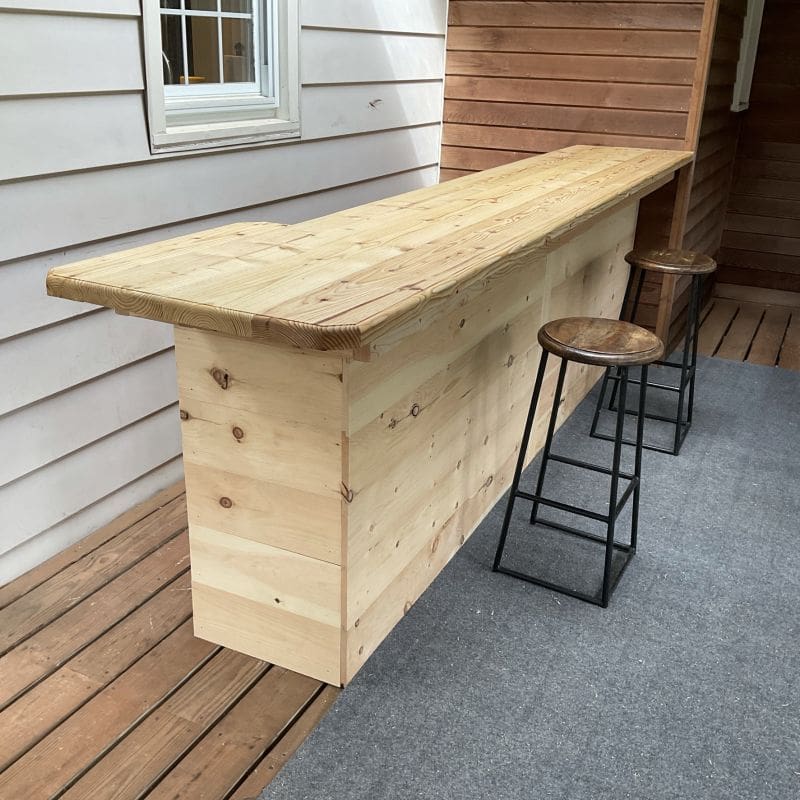
I mean, what’s better than a cool place to hang out with friends, catch a game, have a holiday or birthday party? This wood bar project was actually a mash-up of adulting, enjoying time with friends after the kids go to bed and, their young daughter’s impending birthday party. Here’s what you need to know to build a bar at your house.
How to Build a Bar: Materials
DIY bar materials don’t need to be exotic to draw friends together, but they probably should be in reasonably decent shape when you buy them. So rather than pull 2-bys off the top of the pile, I always dig down a little to the stuff that’s underneath. Since they’re always the straightest boards and least forklift-boot-marked-returned-est.
These Idaho Forest Doug Fir 2x4s I used for the frame were awesomely straight and for the wood nerds among us, because that grain is lusciously tight.
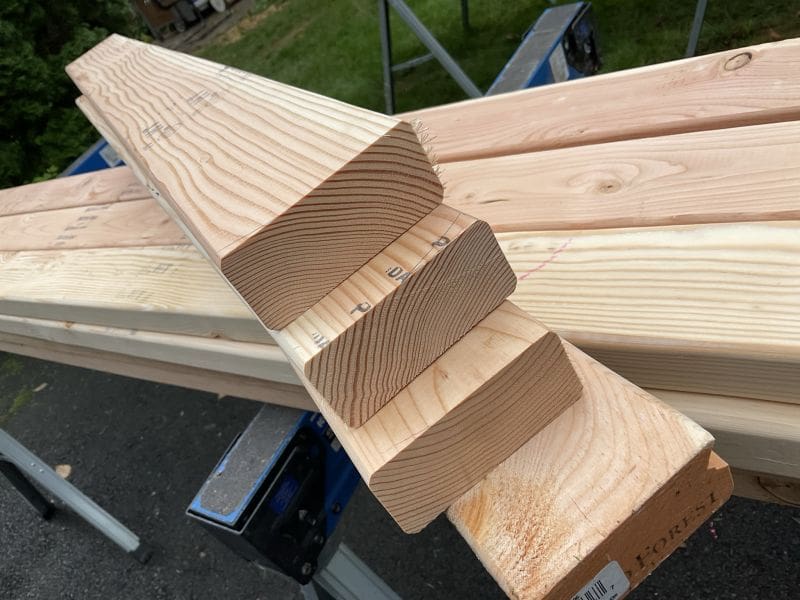
Build a Bar: Layout
If a wood bar ain’t comfortable to linger about, then it ain’t a bar. It’s a shelf with booze on it.
We designed this wood bar to be 42 inches high and three 2x8s deep (22 ¼-inches) with a little wing wall jutting back.
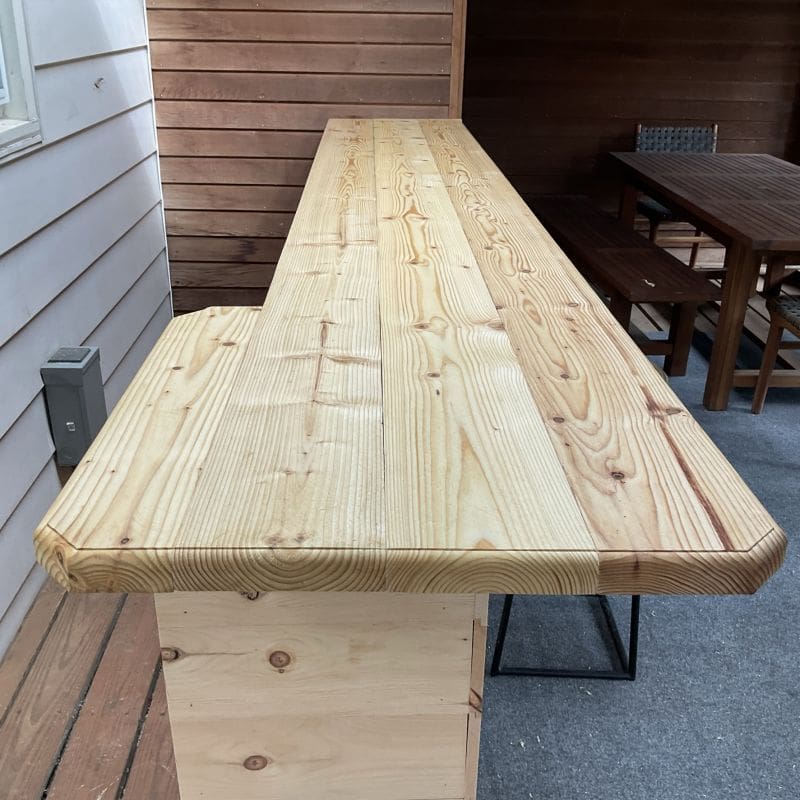
Before screwing anything together, a little tape on the floor is a handy way to time travel and get a feel for what real life will feel like once there’s something in the space.

Build a Bar: Framing
When you consider how to build a bar at your house, my take is to go down the simplest path. The scaffold, so to speak, the wood bar hangs on is essentially a framed wall. When I build a wood bar, I lay out the front face of the bar with studs at 24 inches on-center.

The wing wall is just a box. So the first time I framed the wing for this DIY bar, I just carried my 42-inch height through. However, the deck was pitched and therefore so was my wing wall, which I caught with a level. This can happen if you’re building a bar anywhere, say, in a basement. Slabs undulate. The point is, you want your transitions to be in plane with each other so the wood bar top’s base is flat. Straight is better than level.
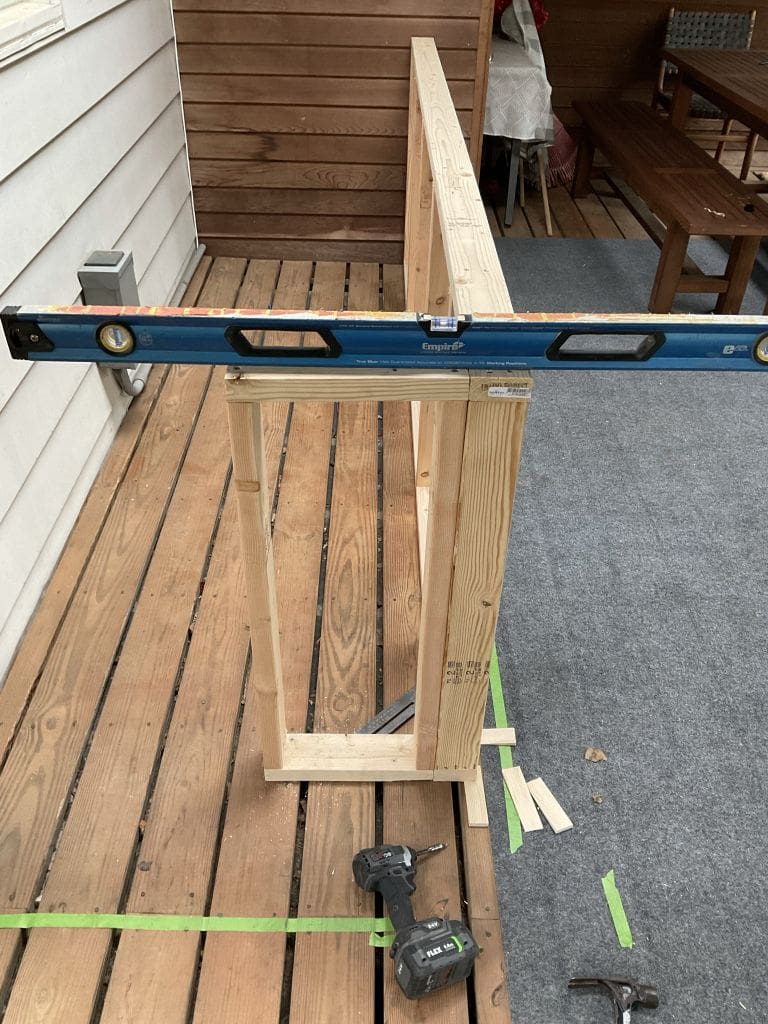
To say I used a lot of jobsite pocket screws on this one is an understatement. They’re everywhere. I used my mighty countersink–see my countersink video here–to pre-drill, then screw, the wing wall to the front wall.
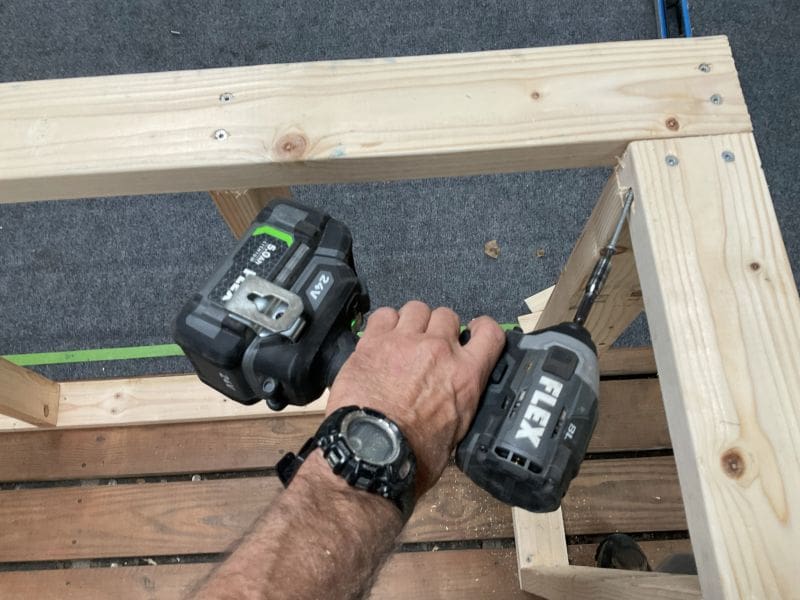
Bartop Base
Then I built what some framers call a “chicken ladder” for the bartop base. Since it is 16 inches wide, it allows the bar top to cantilever this base 2-inches on each side for a nice effect and it gives the top of the bar a little heft.
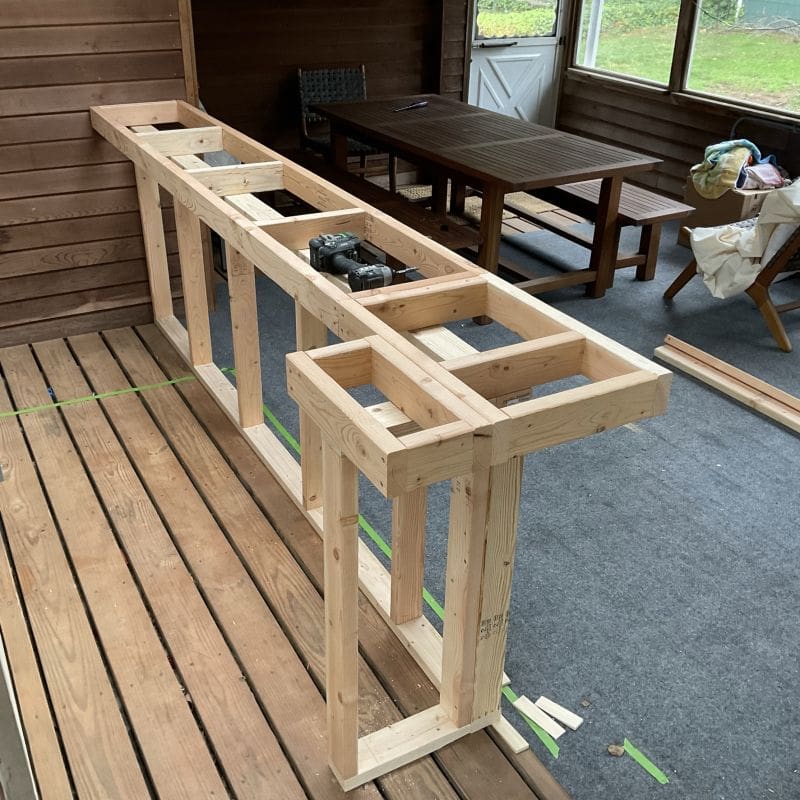
How to build a bar: The bartop is fastened to the walls with…wait for it…pocket screws.
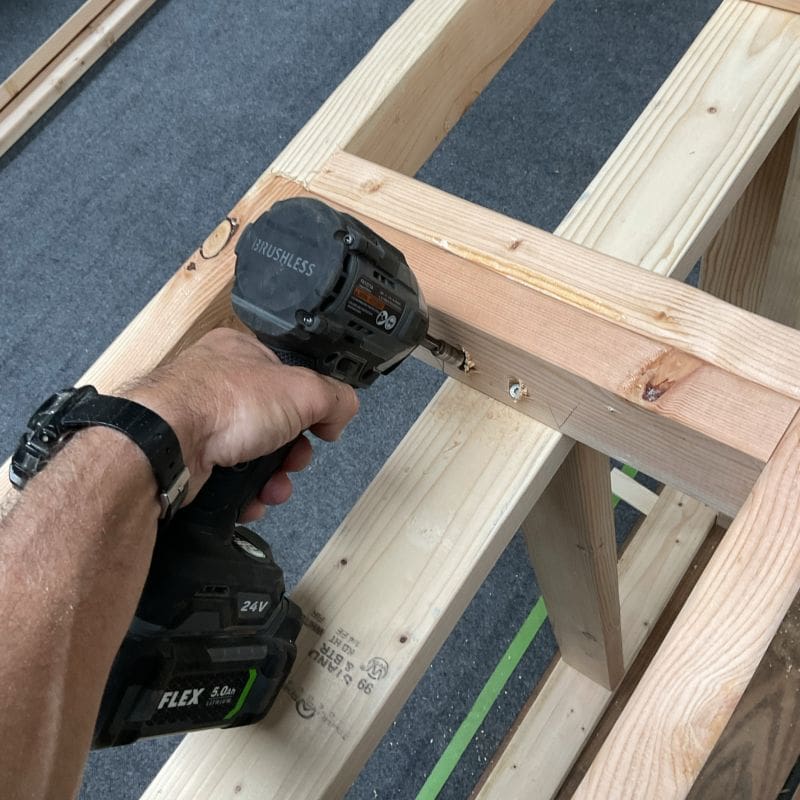
Bartop
I’d love to go on a dilettante Instagram-y rant about craftsmanship and how craftsman-ish…no, no I wouldn’t…but I do like my work to be crisp, simple, and attainable. On a budget, too. And the bartop is where the glass sits and the elbow rests, so, let’s find a way to make a board intended to be a joist or rafter look like a place to cozy up and leave some marks in when the home team hits/misses the game winner.
I picked the three cleanest 2x8s I could find. Nice, straight, untwisted White Fir. Next, I took my Bosch Colt router–I love this thing–and knocked the round-over off with a bevel bit, creating a micro-bevel like you’d see on pre-finished flooring. I matched up the boards–best sides up–bookmatching to a degree how they naturally fit together best and then installed them that way. I butted them edge to edge, clamped them tight, then fired in my #10 x 2 ½-inch Spax. It worked.
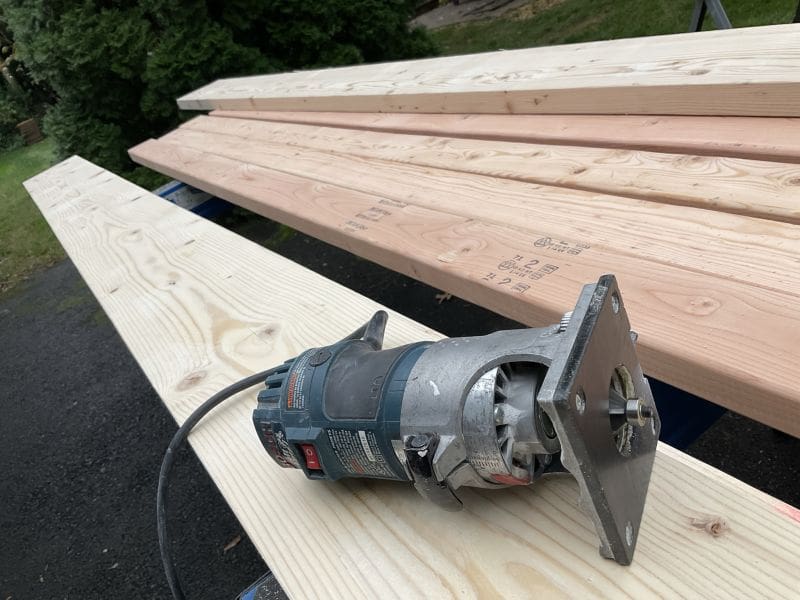
DIY bar: The first board to screw down starts from the bartender’s side.
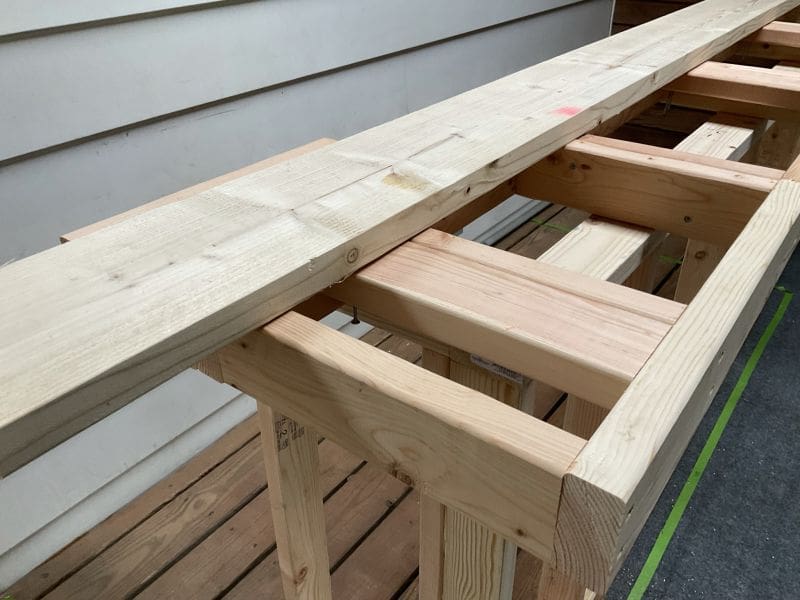
You can blow in screws from the top like deck boards, and that could be a cool look. But for this DIY bar, I decided it’d be cleaner to screw up from my chicken ladder with 2 ½-inch screws. Also note that I screwed 2×4 blocks on the flat next to the “studs” on the chicken ladder. This makes fastening the bar top boards much easier.
Rack Brace
There was a wiggle in the wing wall. Even though it was screwed to the deck below it, it flexed. And even though the shiplap membrane applied later may have cinched it up, I don’t do things that way. So, to hedge my bets now, I hurled a 2×4 rack brace in there and it went from meh- to Monst-ah! This thing is pretty close to a bridge abutment at this point. Party on (top of it) Garth!
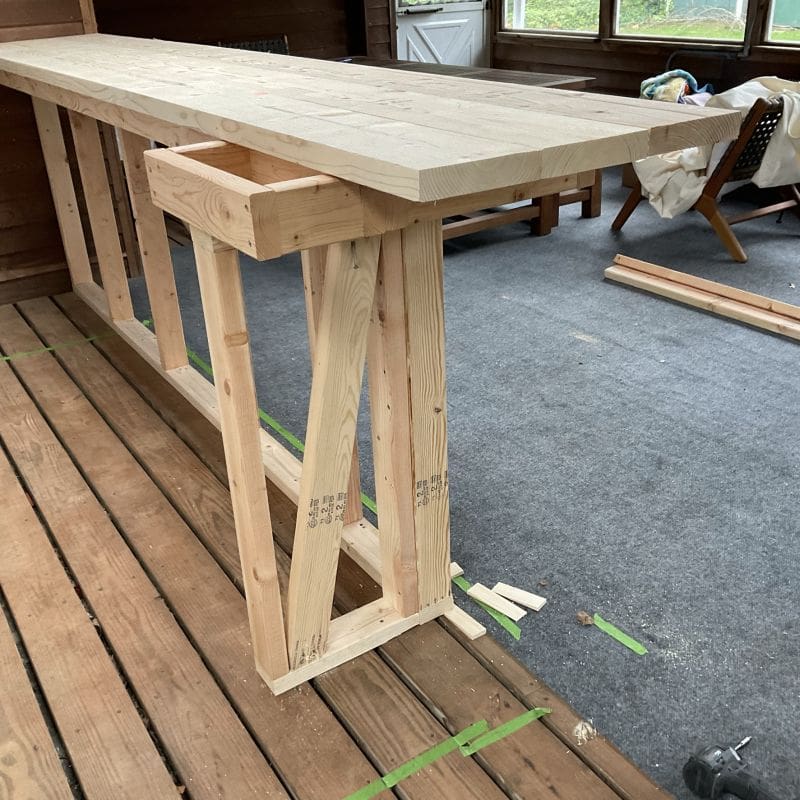
And how did I make those connections? Pocket ‘em, baby.
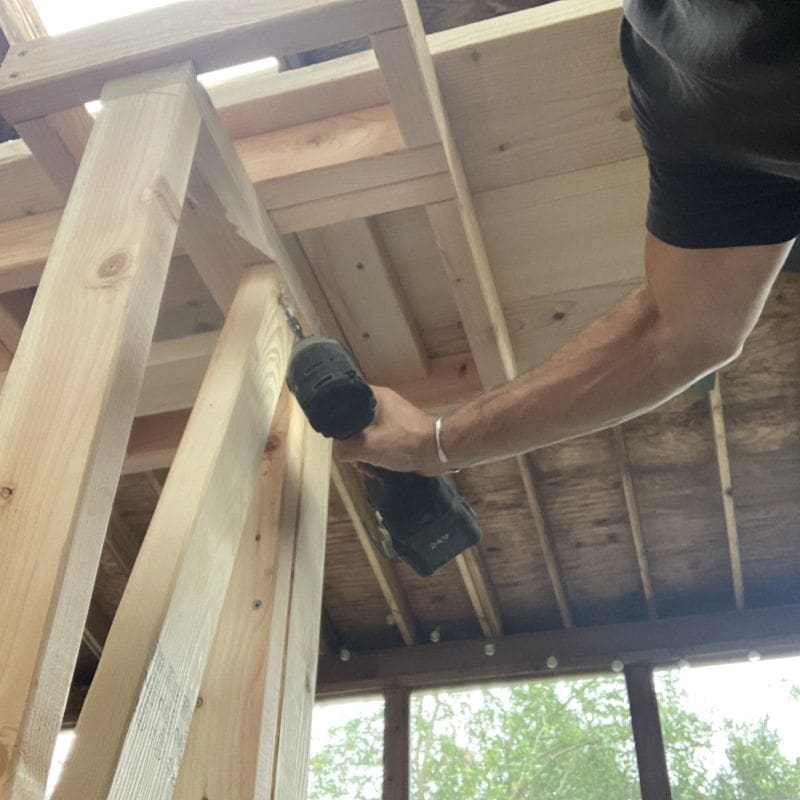
Bar Top Ends
More pocket screws!
Then I cantilevered the bar top about 8 inches past the wing wall and the boards weren’t quite even with each other. Also, I didn’t want them to open where they were unsupported. After that, I supported them with some jobsite pocket screws. Next, I drove them front/back front back so that thing is locked down. A clamp snugged them up in-plane with each other.
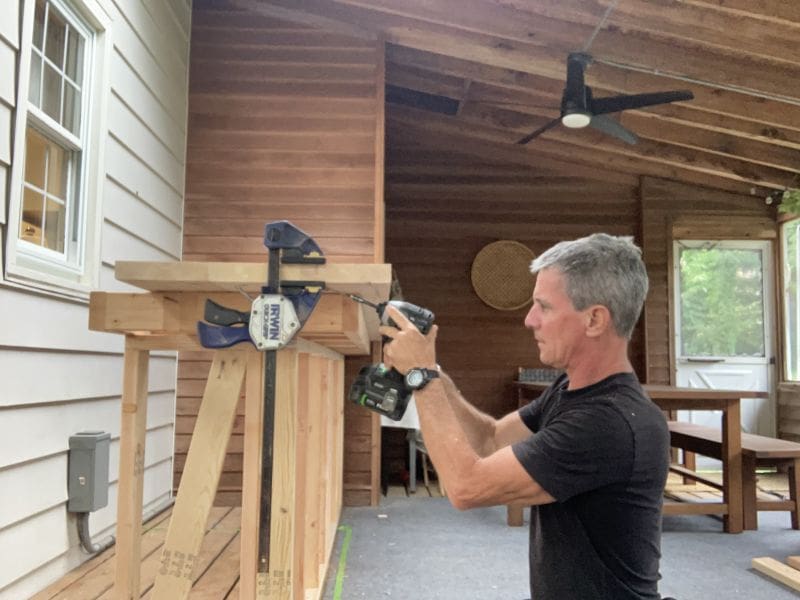
SHIPLAP! rant
A quick break from the DIY bar how-to:
-Please, god, please know that Joanna Gaines (who entirely deserves her empire as far as I’m concerned) did not invent shiplap.
-Or pine.
-Or pine shiplap. It’s been around for a while. Just sayin’.
-I use it on my custom sheds, which my customers j’ adore.
I used it here (and my customer likes Chip and Joanna, so there you have it; bookmatch made in heaven) as cladding.
To make the most of the material available at Lowe’s (8-foot lengths), I ran a vertical at the center of the bar, then ran horizontals out from it on each side.
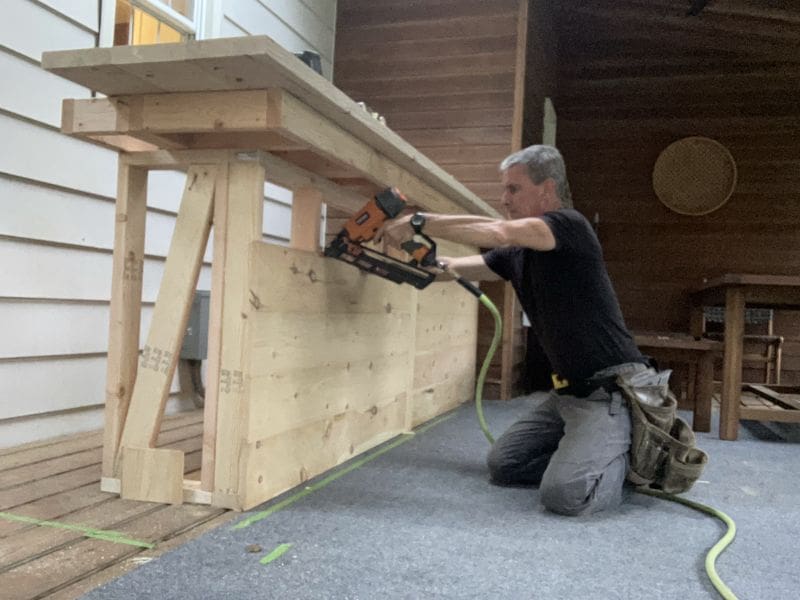
Final Backyard Bar Details
I used a Bosch 5-inch random orbit sander–awesome tool–to soothe the framing fury in the White Fir. I used 40-, 80-, 100-grit passes, which did the trick.
After sanding, I eased the edge with the router and a nice Ogee profile.
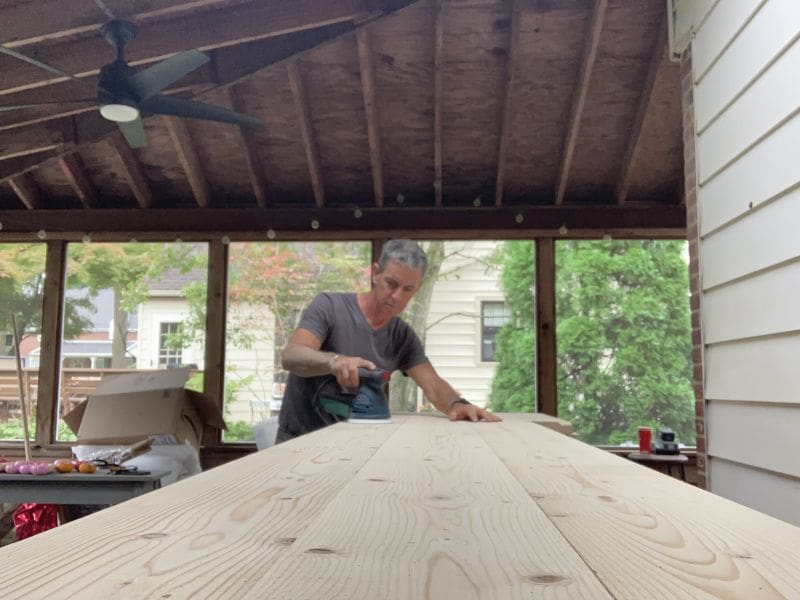
Then the bar top got its obligatory wipe down with my favorite finish of all time, boiled linseed oil.
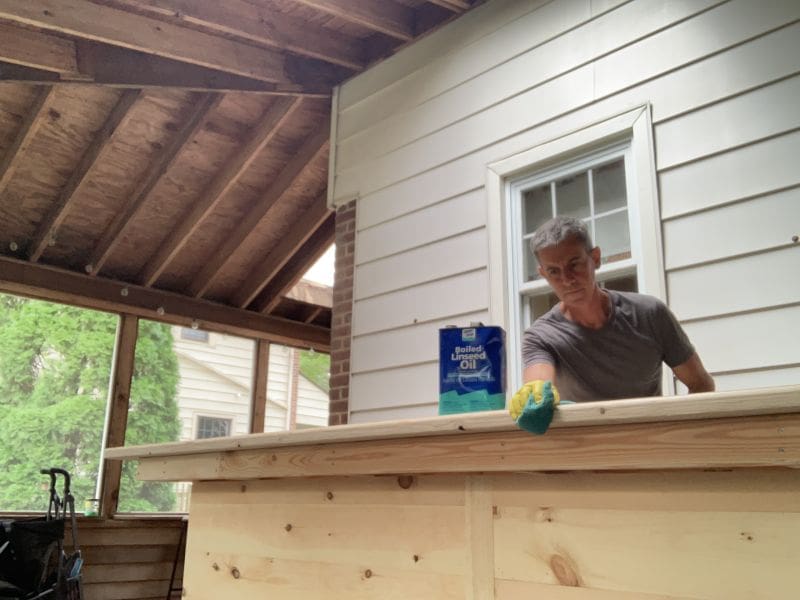
The last little doohickey on this backyard deck bar, a storage shelf for the bartender. I mean, you gotta keep the goods somewhere. A 2×4 cleat on the wing wall and a 2×4 cleat on the main wall with a 2×10 shelf so you’ve got a lifetime supply of supply storage.
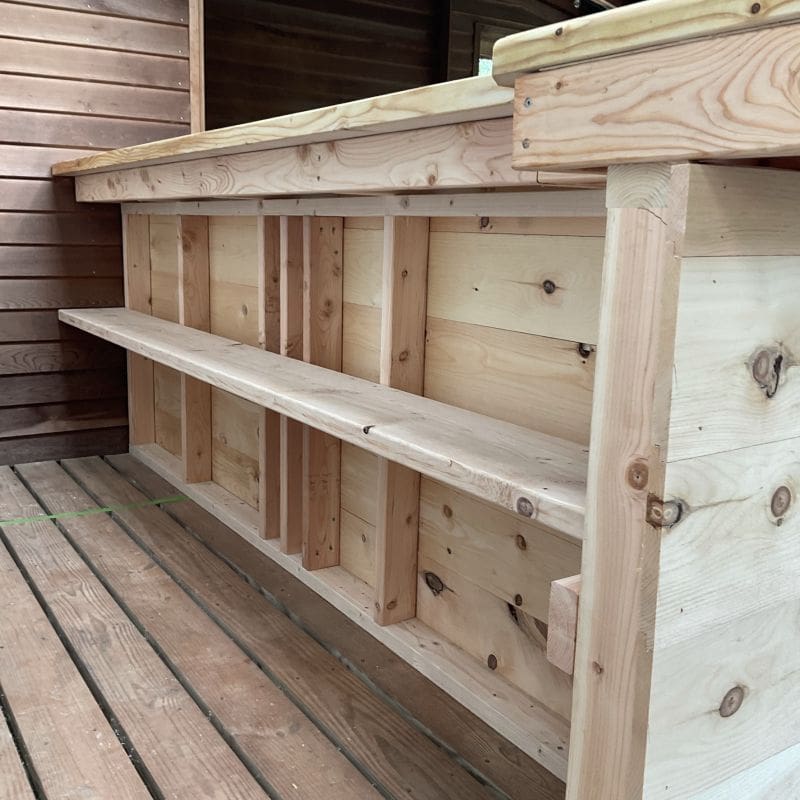
I think that’s all she wrote: How to build a bar. Now it’s time to trick out your DIY wood bar to make it even more awesome.
Check out our favorite tools and gear!


Awesome video